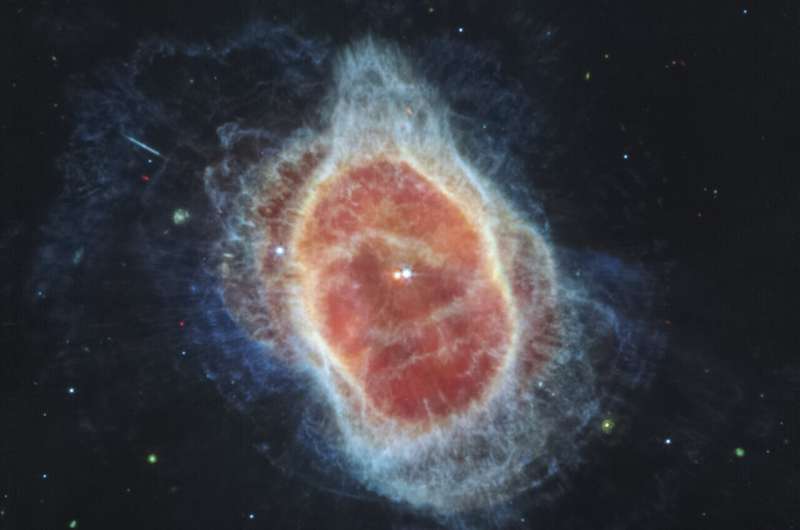Tuesday's releases showed parts of the universe seen by other telescopes. But Webb's sheer power, distant location from Earth and use of the infrared light spectrum showed them in a new light that scientists said was almost as much art as science.
"It's the beauty but also the story," NASA senior Webb scientist John Mather, a Nobel laureate, said after the reveal. "It's the story of where did we come from."
And, he said, the more he looked at the images, the more he became convinced that life exists elsewhere in those thousands of stars and hundreds of galaxies.
With Webb, scientist hope to glimpse light from the first stars and galaxies that formed 13.7 billion years ago, just 100 million years from the universe-creating Big Bang. The telescope also will scan the atmospheres of alien worlds for possible signs of life.
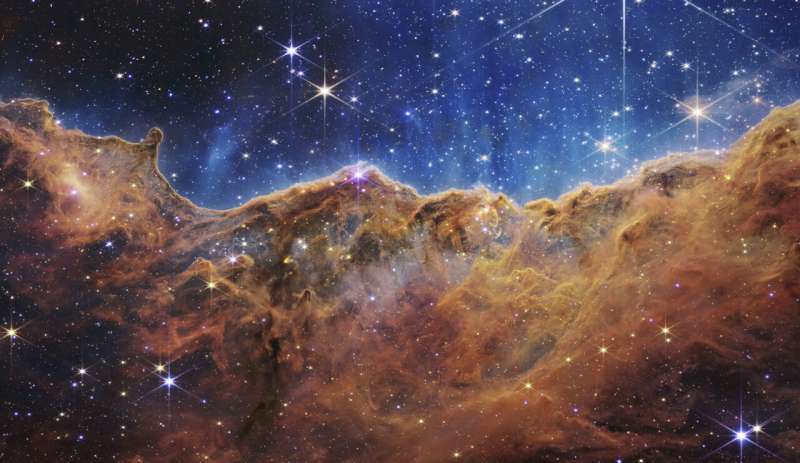
"Every image is a new discovery and each will give humanity a view of the humanity that we've never seen before,'' NASA Administrator Bill Nelson said Tuesday, rhapsodizing over images showing "the formation of stars, devouring black holes."
Webb's use of the infrared light spectrum allows the telescope to see through the cosmic dust and see faraway light from the corners of the universe, scientists said.
"We've really changed the understanding of our universe," said European Space Agency director general Josef Aschbacher.
The European and Canadian space agencies joined NASA in building the telescope, which was launched in December after years of delays and cost overruns. Webb is considered the successor to the highly successful, but aging Hubble Space Telescope.
Some of Hubble's most stunning images have been shots of the Carina nebula, one of the bright stellar nurseries in the sky, about 7,600 light-years away. Webb project scientist Klaus Pontoppidan decided to focus one of Webb's early gazes on that location because he knew it would be the frameable beauty shot. The result was an image of a colorful landscape of bubbles and cavities where stars were being born.
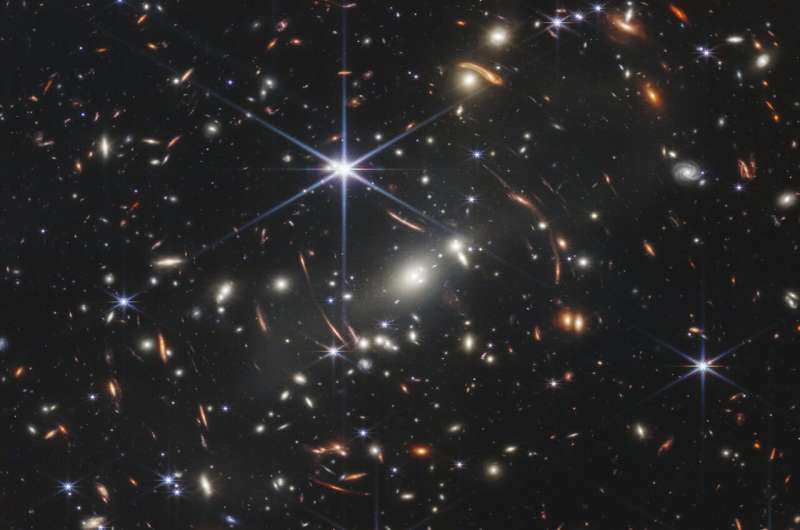
"This is art," Pontoppidan said. "I really wanted to have that landscape. It has that contrast. We have the blue. We have golden. There's dark. There's bright. There's just a sharp image."
On tap for release Thursday: A close-up of Jupiter that shows one of its faint rings and a few of its moons, he said.
Also among the new shots:
—Southern Ring nebula, which is sometimes called "eight-burst." Images show a dying star with a foamy edge of escaping gas. It's about 2,500 light-years away. A light-year is 5.8 trillion miles. "This is the end for this star, but the beginning for other stars," Pontoppidan said. As it dies, it throws off parts that seed the galaxy with elements used for new stars, he said.
—Stephan's Quintet, five galaxies in a cosmic dance that was first seen 225 years ago in the constellation Pegasus. It includes a black hole that scientists said showed material "swallowed by this sort of cosmic monster." Webb "has just given us a new, unprecedented 290 million-year-old view of what this Quintet is up to," Cornell University astronomer Lisa Kaltenegger, who wasn't part of the Webb team, said in an email.
—A giant planet called WASP-96b. It's about the size of Saturn and is 1,150 light-years away. A gas planet, it's not a candidate for life elsewhere but a key target for astronomers. Instead of an image, the telescope used its infrared detectors to look at the chemical composition of the planet's atmosphere. It showed water vapor in the super-hot planet's atmosphere and even found the chemical spectrum of neon, showing clouds where astronomers thought there were none.
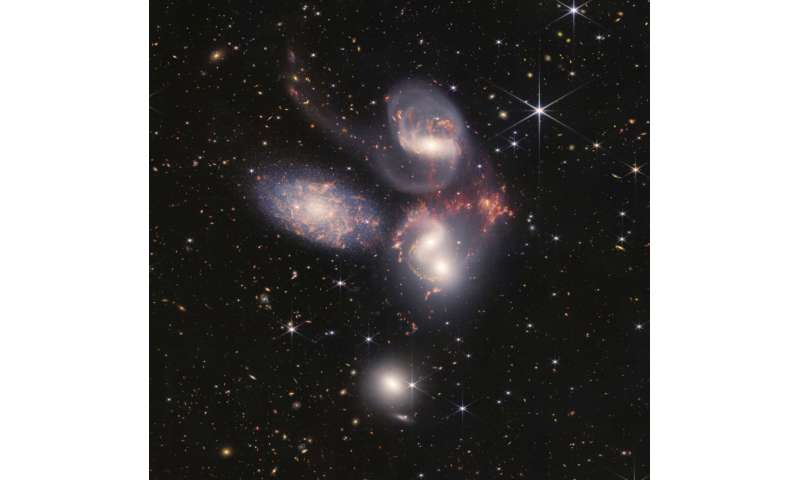
This image provided by NASA on Tuesday, July 12, 2022, shows Stephan's Quintet, a visual grouping of five galaxies captured by the Webb Telescope's Near-Infrared Camera (NIRCam) and Mid-Infrared Instrument (MIRI). This mosaic was constructed from almost 1,000 separate image files, according to NASA. Credit: NASA, ESA, CSA, and STScI via AP 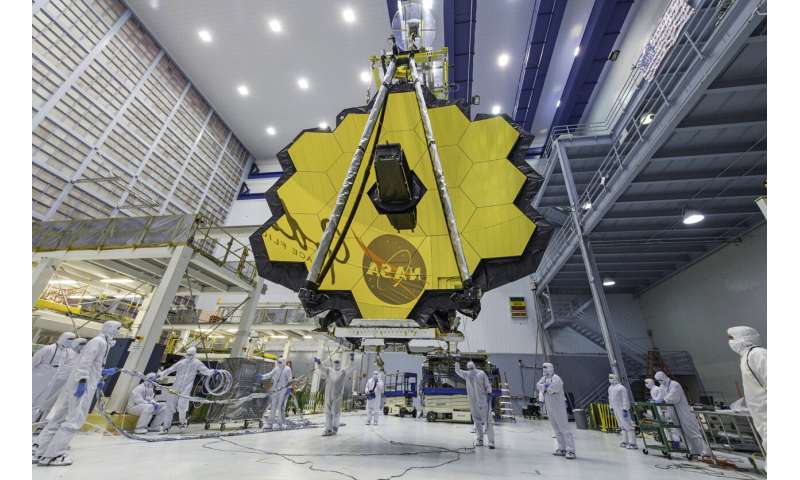
In this April 13, 2017 photo provided by NASA, technicians lift the mirror of the James Webb Space Telescope using a crane at the Goddard Space Flight Center in Greenbelt, Md. The telescope is designed to peer back so far that scientists will get a glimpse of the dawn of the universe about 13.7 billion years ago and zoom in on closer cosmic objects, even our own solar system, with sharper focus. Credit: Laura Betz/NASA via AP, File 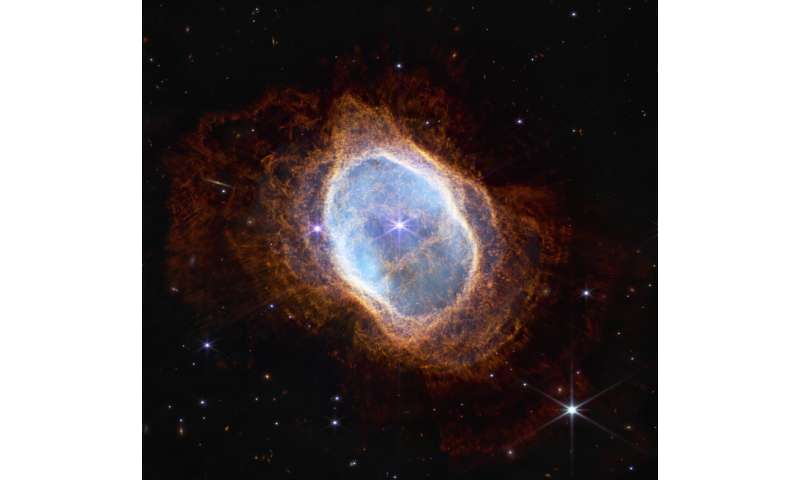
This image released by NASA on Tuesday, July 12, 2022, shows the bright star at the center of NGC 3132, the Southern Ring Nebula, for the first time in near-infrared light. Credit: NASA, ESA, CSA, STScI via AP 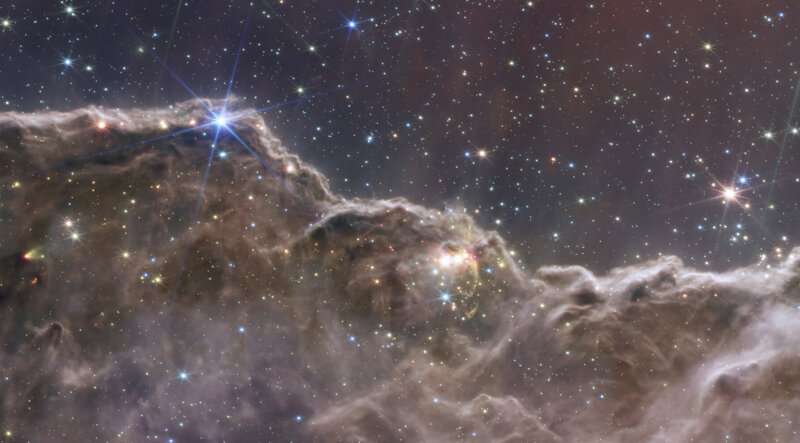
This image released by NASA on Tuesday, July 12, 2022, combined the capabilities of the James Webb Space Telescope's two cameras to create a never-before-seen view of a star-forming region in the Carina Nebula. Captured in infrared light by the Near-Infrared Camera (NIRCam) and Mid-Infrared Instrument (MIRI), this combined image reveals previously invisible areas of star birth. Credit: NASA, ESA, CSA, STScI via AP 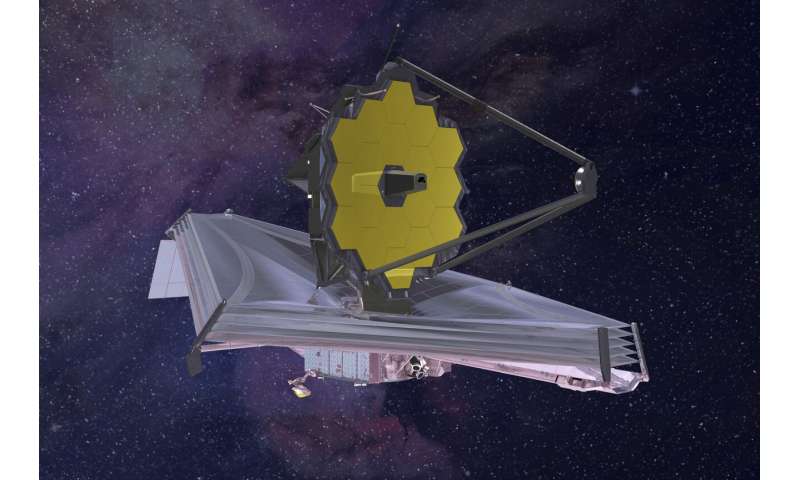
This 2015 artist's rendering provided by Northrop Grumman via NASA shows the James Webb Space Telescope. The telescope is designed to peer back so far that scientists will get a glimpse of the dawn of the universe about 13.7 billion years ago and zoom in on closer cosmic objects, even our own solar system, with sharper focus. Credit: Northrop Grumman/NASA via AP, File 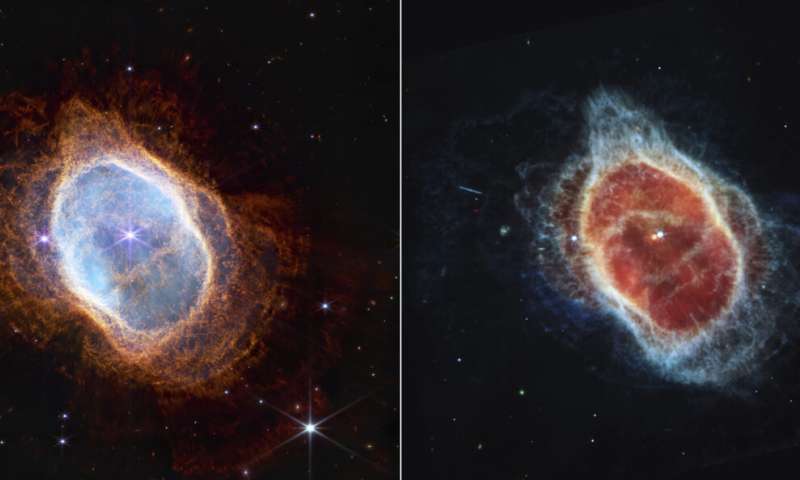
This combo of images released by NASA on Tuesday, July 12, 2022, shows a side-by-side comparison of observations of the Southern Ring Nebula in near-infrared light, at left, and mid-infrared light, at right, from the Webb Telescope. Credit: NASA, ESA, CSA, and STScI via AP 
This image provided by NASA on Tuesday, July 12, 2022, shows Stephan's Quintet, a visual grouping of five galaxies captured by the Webb Telescope's Mid-Infrared Instrument (MIRI). Credit: NASA, ESA, CSA, and STScI via AP 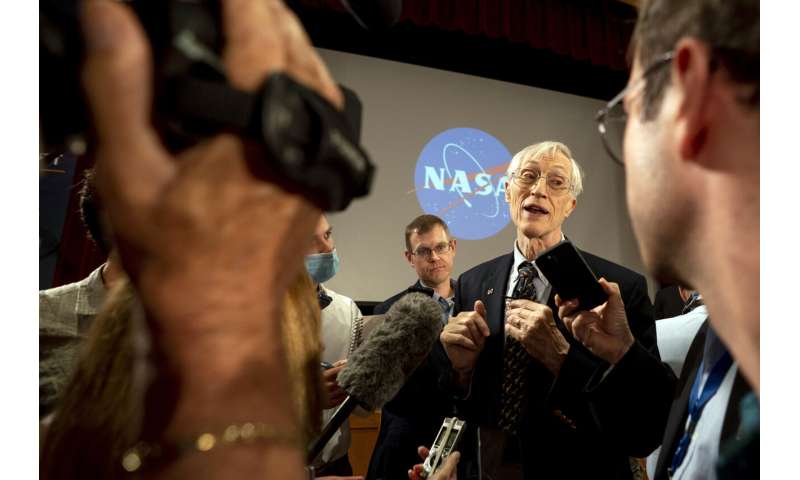
In this image released by NASA, NASA James Webb Space Telescope Senior Project Scientist John Mather speaks with members of the media following the release of the first full-color images from the James Webb Space Telescope, Tuesday, July 12, 2022, at NASA's Goddard Space Flight Center in Greenbelt, Md. Credit: Taylor Mickal/NASA via AP 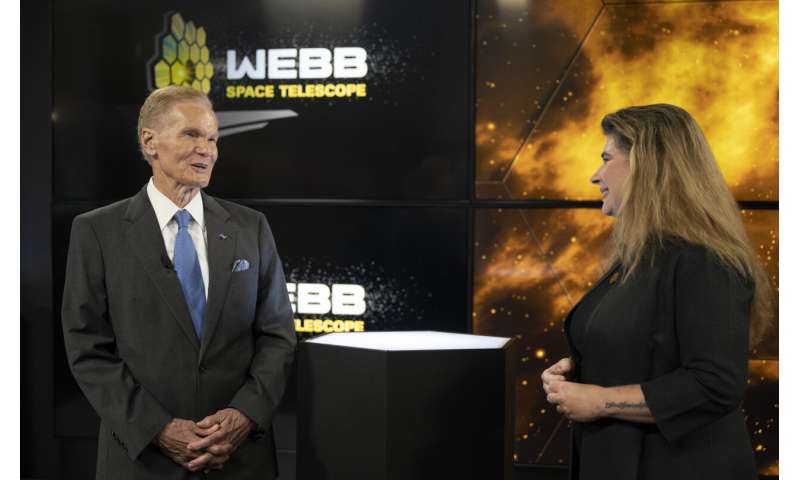
In this image released by NASA, NASA administrator Bill Nelson, left, speaks with assistant director of science at NASA's Goddard Space Flight Center Michelle Thaller, right, during a broadcast releasing the first full-color images from NASA's James Webb Space Telescope, Tuesday, July 12, 2022, at NASA's Goddard Space Flight Center in Greenbelt, Md. Credit: Bill Ingalls/NASA via AP 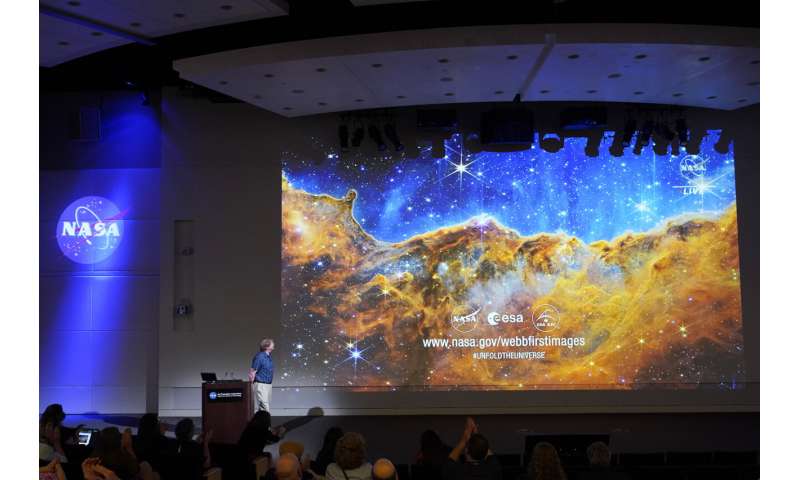
Michael Ressler, Project Scientist for the JWST Mid-Infrared Instrument, speaks in front of an image of the Carina Nebula, captured on the James Webb Space Telescope, during a news conference at the NASA Jet Propulsion Laboratory Tuesday, July 12, 2022, in Pasadena, Calif. Credit: AP Photo/Marcio Jose Sanchez
The images were released one-by-one at an event at NASA's Goddard Space Center that included cheerleaders with pompoms the color of the telescope's golden mirrors.
"It moves you. This is so so beautiful," Thomas Zurbuchen, chief of NASA's science missions, said after the event. "Nature is beautiful. To me this is about beauty."
The world's biggest and most powerful space telescope rocketed away last December from French Guiana in South America. It reached its lookout point 1 million miles (1.6 million kilometers) from Earth in January. Then the lengthy process began to align the mirrors, get the infrared detectors cold enough to operate and calibrate the science instruments, all protected by a sunshade the size of a tennis court.
Explore further
© 2022 The Associated Press. All rights reserved. This material may not be published, broadcast, rewritten or redistributed without permission.



